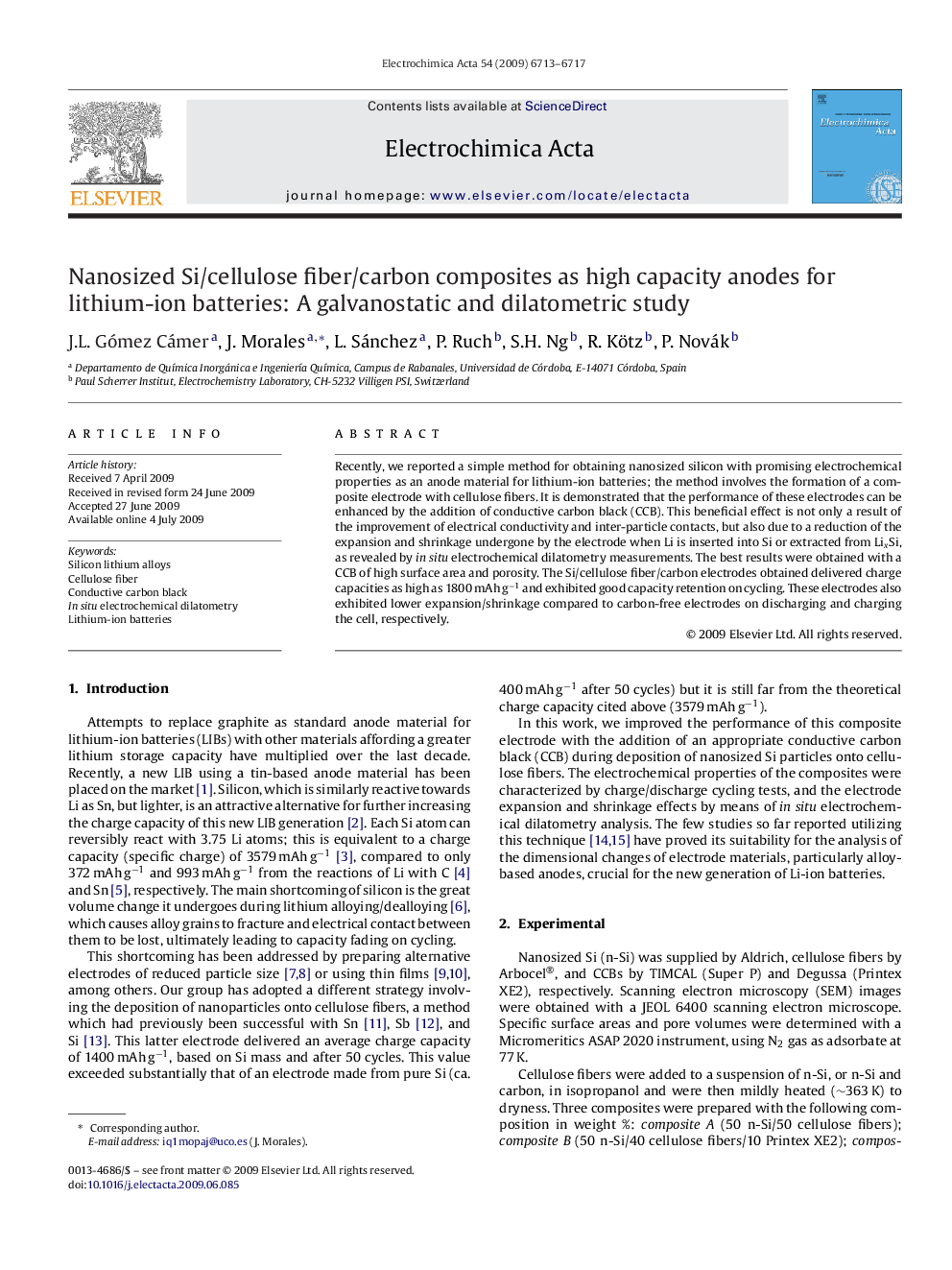| Article ID | Journal | Published Year | Pages | File Type |
|---|---|---|---|---|
| 193259 | Electrochimica Acta | 2009 | 5 Pages |
Recently, we reported a simple method for obtaining nanosized silicon with promising electrochemical properties as an anode material for lithium-ion batteries; the method involves the formation of a composite electrode with cellulose fibers. It is demonstrated that the performance of these electrodes can be enhanced by the addition of conductive carbon black (CCB). This beneficial effect is not only a result of the improvement of electrical conductivity and inter-particle contacts, but also due to a reduction of the expansion and shrinkage undergone by the electrode when Li is inserted into Si or extracted from LixSi, as revealed by in situ electrochemical dilatometry measurements. The best results were obtained with a CCB of high surface area and porosity. The Si/cellulose fiber/carbon electrodes obtained delivered charge capacities as high as 1800 mAh g−1 and exhibited good capacity retention on cycling. These electrodes also exhibited lower expansion/shrinkage compared to carbon-free electrodes on discharging and charging the cell, respectively.
